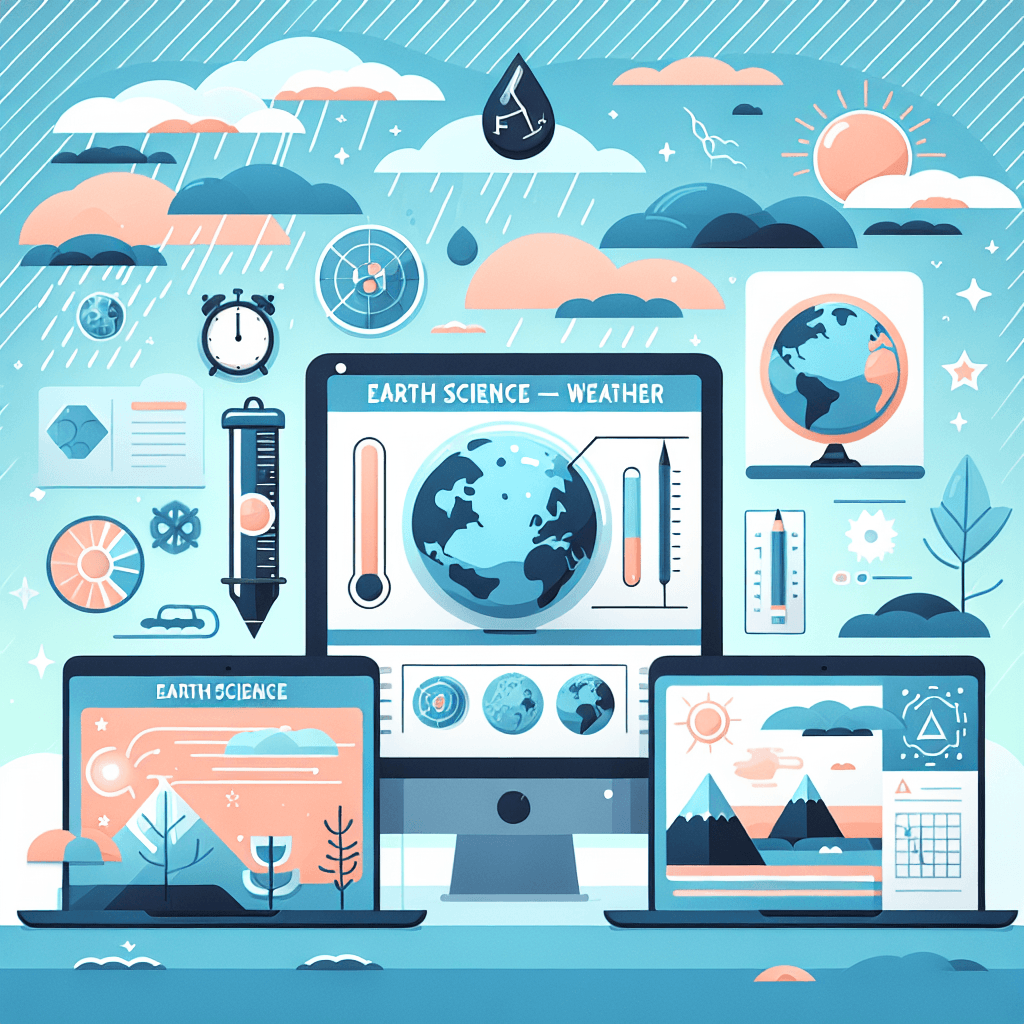Learn: Earth Science - Weather
Concept-focused guide for Earth Science - Weather (no answers revealed).
~7 min read

Overview
Welcome! In this session, we’ll break down the core ideas behind key weather phenomena and the scientific principles that govern them. By the end, you’ll be equipped to confidently interpret weather patterns, recognize cloud types, understand how weather instruments work, and analyze atmospheric events—skills that are crucial for both exams and real-world weather literacy. Let's dive deep into how air, moisture, energy, and atmospheric layers all interact to create the weather we experience.
Concept-by-Concept Deep Dive
The Water Cycle and Condensation
What It Is:
The water cycle is the continuous movement of water on, above, and below the Earth's surface. A critical part of this cycle is condensation, where water vapor in the air cools and changes back into liquid droplets.
Key Components:
- Evaporation: Sun heats water, turning it into vapor.
- Condensation: Warm, moist air rises, cools, and can’t hold as much water vapor, so it condenses into tiny droplets.
- Cloud Formation: Millions of condensed droplets cluster together, forming clouds.
Reasoning/Calculation Recipe:
- Warm air rises due to its lower density.
- As it rises, the air cools.
- Cooler air holds less water vapor; surplus vapor condenses into droplets.
- These droplets gather on particles (like dust) to form visible clouds.
Common Misconceptions:
- Mistaking condensation for precipitation: Condensation forms clouds; only when droplets combine and grow heavy do they fall as precipitation.
- Assuming air always holds the same amount of moisture: Capacity depends on temperature; cooler air holds less.
Cloud Types and Weather Associations
What It Is:
Clouds come in various shapes and sizes, each signaling different weather. Recognizing cloud types helps predict upcoming weather conditions.
Key Types:
- Cumulus: Fluffy, white, and cotton-like; usually indicate fair weather but can grow into storm clouds.
- Stratus: Layered, gray, and cover the sky; often bring steady drizzle or overcast conditions.
- Cirrus: Wispy, high-altitude, made of ice crystals; signal fair weather but can precede a change.
- Cumulonimbus: Towering, dark, and associated with thunderstorms and heavy rainfall.
Reasoning/Calculation Recipe:
- Observe cloud shape, size, and altitude.
- Connect observations to typical weather patterns (e.g., cumulonimbus = stormy).
- Use cloud progression to anticipate changes (e.g., cumulus growing taller may signal storms).
Common Misconceptions:
- All clouds mean rain: Many clouds, especially cumulus and cirrus, often occur in fair weather.
- Confusing stratus and fog: Fog is just stratus cloud at ground level.
Solar Energy and Weather Patterns
What It Is:
The Sun is the Earth's primary energy source, driving winds, temperature changes, and the water cycle.
Key Components:
- Insolation: Incoming solar radiation, unevenly distributed due to Earth's shape and tilt.
- Heat Transfer: Creates temperature gradients, causing air to move (wind).
- Role in the Water Cycle: Solar energy powers evaporation, setting the cycle in motion.
Reasoning/Calculation Recipe:
- Identify the Sun's role in warming Earth’s surface and atmosphere.
- Understand how this warming causes air to rise and move, forming weather systems.
- Connect areas of high and low pressure to solar heating.
Common Misconceptions:
- Weather comes from outer space: Weather is an Earth-bound process powered by the Sun, not external forces.
- Equator always hottest weather: While insolation is highest, local factors (like wind and ocean currents) can affect temperatures.
Atmospheric Layers and Their Role in Weather
What It Is:
The Earth's atmosphere is divided into layers, each with unique characteristics. Most weather happens in the layer closest to the surface.
Key Layers:
- Troposphere: Lowest layer; contains most of the air mass and water vapor. Weather events (clouds, storms, wind) happen here.
- Stratosphere: Above the troposphere; contains the ozone layer but minimal weather activity.
Reasoning/Calculation Recipe:
- Recognize the troposphere’s role as the “weather layer.”
- Know the boundaries: ground to about 8-15 km up (depending on latitude).
- Understand temperature drops with altitude in this layer.
🔒 Continue Reading with Premium
Unlock the full vlog content, professor narration, and all additional sections with a one-time premium upgrade.
One-time payment • Lifetime access • Support development
Join us to receive notifications about our new vlogs/quizzes by subscribing here!